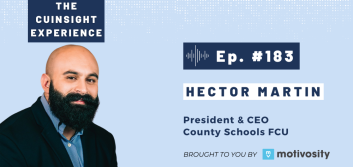When ‘good enough’ becomes obsolete

Cybersecurity and fraud are strategic considerations for all credit unions. These strategic conversations range from what I consider the baseline – compliance with FFIEC’s Cybersecurity Assessment Tool – to planning ahead and making timely investments in the next generation of fraud detection with prevention platform such as CrossCore,™ the first smart, open, plug-and-play platform for fraud and identity services. Fraud detection continues to evolve, and Chris Ryan, Director of Fraud and Identify Solutions at Experian, explains it well:
“Historically, fraud detection focused on data accuracy,” he explained. “In the mid 1990s, the approach shifted to focus on the change in data over time and across multiple transactions. The same transformation is now happening with our digital identities. Fraud detection is going beyond device characteristics to look at ways in which a person physically interacts with their smartphone, tablet or computer. This will define the future of fraud prevention and the quality of customer experiences going forward.”
This past July, I was honored to present at Experian’s Credit Union Advisory Council, an exclusive, handpicked group that meets annually to discuss big-picture issues. It was remarkable to have discussions with 25 of the best and brightest minds in the credit union space. The registration list of this event was literally a “who’s who” of credit union innovation best practices. A good portion of the conference evolved around fraud prevention strategies, and I was fortunate to hear the best questions from credit unions and state-of-the-art solutions from my friends at Experian. The word limit of this article doesn’t allow me to cover all that was presented at this two-day conference, but I will share a few nuggets that are worth your consideration:
- Focus on digital identity – it’s one of the most difficult problems. According to Experian, 61 percent of all fraud attempts came from mobile devices in 2016, mobile platforms are likely to be attacked by fraudsters eight times, and 30 legitimate customers are challenged or blocked to get one fraudster. In a “digital first” financial services market, fraud risk is high and is going to require continual investment in systems and technology. According to CUNA’s Marketing & Technology Report, more than 40 percent of credit unions’ 2017 cybersecurity budgets were at least 6 percent higher than in 2016.
- Build a comprehensive platform that can grow with your organization’s emerging risks and desire for frictionless service. In the opening paragraph, I mentioned Experian’s CrossCore. It is the industry’s first open fraud and identify platform. It comes at a time when most credit unions have fraud prevention tactics that span multiple departments, systems and oversight. CrossCore provides a single point of access for addressing fraud through all its potential stages: account acquisition, origination, account login, access, and transaction. The platform is comprehensive, including identify verification, device intelligence, fraud management, biometrics, and synthetic fraud checking. I don’t know exactly where our pursuit to find and prevent fraud will take us. But I believe a platform like CrossCore will help credit unions plan for and prepare for future risk and maximize seamless service for our members.
Why it matters
Credit unions will only thrive if they can successfully balance fraud security with frictionless member service. Managing fraud risk is a delicate balancing act between fraud detection and the member’s digital experience. While some members currently tolerate friction to varying degrees in the interest of their own protection, our future should promise a frictionless experience that proves as secure, if not more secure, than their experiences today.





